
Talk about sweet! Talk about unusual! Talk about how BIG these are on a plate! All of the above. I’ve had this recipe in my to-try file for a long time (it’s from a December, 2007 Bon Appétit article).
Posted in Veggies/sides, on September 24th, 2010.

Talk about sweet! Talk about unusual! Talk about how BIG these are on a plate! All of the above. I’ve had this recipe in my to-try file for a long time (it’s from a December, 2007 Bon Appétit article).
Posted in Appetizers, on September 22nd, 2010.

Use the leftovers spooned onto a block of cream cheese, or on top of pizza, or as a topping for chicken breasts.
A week or so ago my friend Cherrie and I went to a cooking class with Tarla Fallgatter. Not only was the class held at an adorable home in Laguna Beach (I want to move in there; see Heydie, the hostess pictured below in a limited view of her kitchen), but the food was especially good. Tarla made a couple of things with prosciutto in the class – although not this appetizer. It was good all by itself. She actually had some dough for making flatbread (above) but I think I’d serve it with some lightly toasted pita bread, or even toasted baguette slices. Or, better yet, some sangak bread from our local Middle Eastern market.

Ragout is a term usually reserved for main dishes, I thought, so I went online to look it up. Wikipedia says: “The term ragout (French ragoût) refers to a main-dish stew. (The etymologically related Italian ragù is a sauce such as Bolognese used typically to dress pasta.) The basic method of preparation involves slow cooking over a low heat. The potential ingredients are many; ragouts may be prepared with or without meat, a wide variety of vegetables may be incorporated, and they may be more or less heavily spiced and seasoned.”

So, this ragout isn’t a main dish, but it’s definitely stew-like. An appetizer/stew if you want to associate the word origin here. It’s a mixture of onions, bell peppers, garlic, tomatoes, vinegar, maybe sugar, golden raisins and basil. For me, the golden raisins are the secret ingredient, if you could say there is one. For this appetizer Tarla used it as a topping for bread. I think it would be fabulous as an appetizer scooped on top of a big cube of cream cheese. And Tarla mentioned serving it on top of a grilled or cooked chicken breast. Or on pizza too. So if you make this, you’ll have numerous options of how to use up the leftovers.
Recipe By: From a cooking class with Tarla Fallgatter
Serving Size: 8
Notes: Serve a small spoonful of it on top of flatbread. Can also be served as a relish on top of cooked chicken breasts. Mediterranean mixed spice includes: rosemary, cumin, coriander, oregano, cinnamon and salt.
1/2 cup olive oil
1 whole onion — thinly sliced
1 teaspoon Mediterranean spice rub
3 large red bell peppers
3 large yellow bell peppers
2 large garlic cloves — finely minced
3 medium tomatoes — vine-ripened, peeled, seeded, diced
2 tablespoons red wine vinegar
1 tablespoon sugar
1/3 cup golden raisins — plumped in hot water, drained
2 tablespoons fresh basil — thinly sliced
Salt and freshly ground black pepper
1. Remove seeds and veins from the peppers and thinly slice. Heat olive oil in a saute pan over medium heat; add the onions and spices, then saute until softened – about 8 minutes. Add the peppers and garlic, reduce heat to low, cover and cook until tender, about 20 minutes.
2. Add the tomatoes and vinegar and stir well. Add sugar and raisins. Add basil and season with salt and pepper to taste. Simmer for a few minutes to allow the flavors to mingle.
Per Serving: 187 Calories; 14g Fat (63.2% calories from fat); 2g Protein; 17g Carbohydrate; 2g Dietary Fiber; 0mg Cholesterol; 7mg Sodium.
A year ago: Pork Chops with Sweet and Sour Cabbage
Two years ago: Tiramisu Angel Cake Torte, but this other one is a real tiramisu – the best Tiramisu
Posted in Pasta, Veggies/sides, on September 20th, 2010.
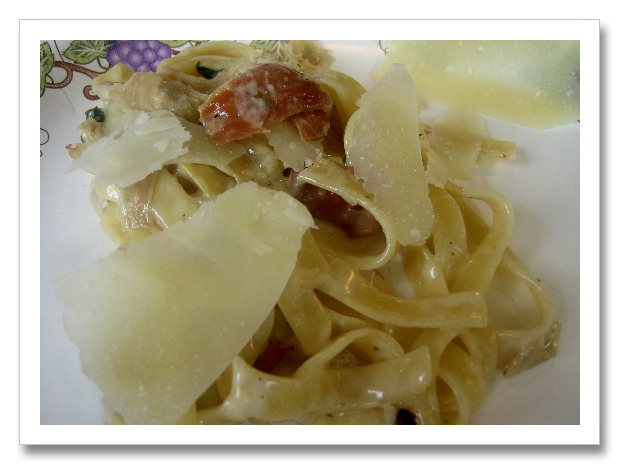
The picture doesn’t do justice to this dish. Oh, is it wonderful! Pasta, onion, shallots, chicken broth, marinated artichoke hearts, cream, fresh basil, prosciutto and grated Parm. This is from a cooking class recently with Tarla Fallgatter. She served it with a chicken breast entree (yes, I’ll post that one too). But we talked about it, that you could add some cooked chicken cubes to this and make it an entree unto itself. That, too, would be wonderful. I’ll be making this sometime soon (and I’ll take a better picture of it).
First you need a small package of prosciutto – the little thin box that holds about 3 ounces, maybe 2 ounces. The slices are briefly broiled, cooled, then crumbled up. Meanwhile you make a quick, simple sauce with the onion and shallots, broth, marinated artichoke hearts (drained, rinsed and sliced), the cream, basil, Parmesan, the pasta and the crispy prosciutto on top. That’s it. Worth making.
Recipe By: From a cooking class with Tarla Fallgatter
Serving Size: 8
Serving Ideas: This could also be a very nice entree – just add about 12 ounces of precooked chicken cubes to the sauce and heat through. This dish is very rich, so do serve small portions.
1 pound fettucine
2 tablespoons unsalted butter
1 medium onion — peeled, thinly sliced
1 whole shallot — peeled, thinly sliced
1 cup chicken stock
1 1/2 cups marinated artichoke hearts — drained, rinsed, sliced
1 1/2 cups heavy cream
2 tablespoons fresh basil — or fresh thyme leaves
Salt and freshly ground black pepper (may not need any salt)
3 ounces prosciutto — thinly sliced
1 cup Pecorino-Romano cheese
1. Bring 2 quarts water to a boil, add a tablespoon of salt and return to the boil. Add fettucine and cook until al dente, reserving 1/2 cup of the cooking liquid. Drain and set aside.
2. Preheat broiler and place prosciutto slices on a cookie sheet and broil for 2 minutes per side. Set aside to cool. Cut into small pieces. (Put serving platter in the oven to heat.)
3. In a saute pan, heat 2 T. butter, add onion, shallot and basil, then saute until soft. Add the artichokes and stir to coat with onions and shallots. Add chicken stock and simmer until liquid is reduced to about 1/2 cup. Add one cup of the cream and bring to a simmer.
4. Add the cooked fettucine and stir to coat with the sauce, stirring in a third of the cheese and more cream, as necessary. Stir in the prosciutto.
5. Pour the pasta onto the preheated serving platter and sprinkle with more of the cheese. Pass the remaining cheese. Add more basil sprigs to the top.
Per Serving (assumes you use all the cream and all the cheese): 513 Calories; 27g Fat (48.1% calories from fat); 17g Protein; 49g Carbohydrate; 3g Dietary Fiber; 91mg Cholesterol; 887mg Sodium.
A year ago: Crown Roast of Pork with Apple Gravy
Two years ago: Chicken Posole
Three years ago: Garlic Green Beans (a favorite)
Posted in Appetizers, on September 18th, 2010.
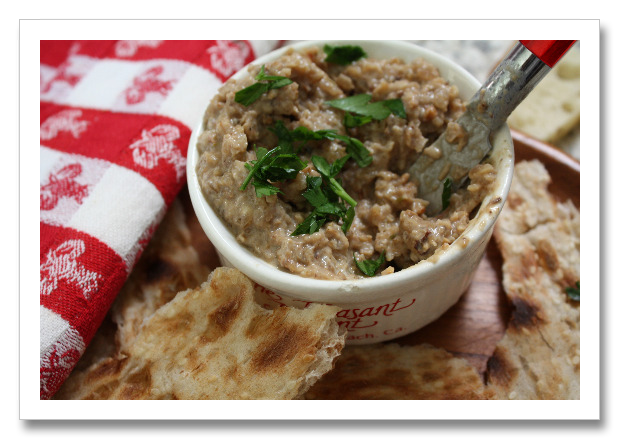
It’s been mentioned here before . . . brown food is really tough to photograph. You’ve got to give it some dramatic contrast. And even with that, it sort of looks like ground up toast or waffles, doesn’t it? With maybe some oatmeal mixed in? Brown, brown and more brown. The walnuts are brown – dark brown because they were toasted. The fennel, onion, and shallots all turned light brown because they were sautéed for awhile in a frying pan. The garlic was a touch of light, but not much – it’s still in the brown family.
Posted in Appetizers, easy, on September 16th, 2010.
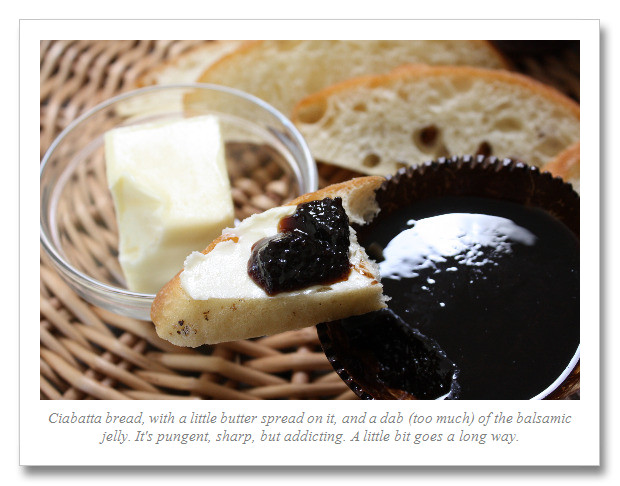
Well, what can I tell you except this is really different. Truly, it is. And it may not appeal to some palates. I’m sure children wouldn’t like it. Our group of adults loved it. It’s so very unusual, which I like about it. Certainly not the run-of-the-mill appetizer.
Posted in Uncategorized, on September 15th, 2010.
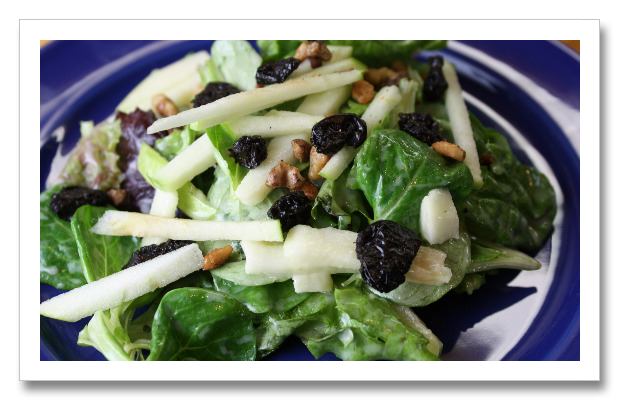
Can I just tell you, you need to make this salad? It’s so darned good. I’ve posted it before, long time ago (it’s a Phillis Carey recipe), but didn’t have a photo of it, so I made it the other night. I thought my DH was going to lick the plate. It does have some sweetness to it (maple syrup in the dressing) and it does kind of need to be made at the last minute (unless you keep the julienned apples soaking in Sprite so they don’t turn brown). It’s an easy salad – I made the dressing several hours ahead, toasted the walnuts ahead too, measured out the dried cherries and the salad was ready to eat.
Here’s the post I wrote about it long ago. And then, here’s the PDF in case you believe me and will just go for it and print it out.
Posted in Veggies/sides, on September 14th, 2010.
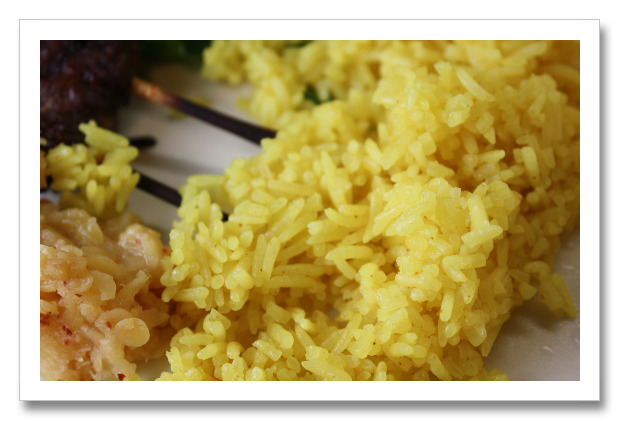
Who would think that yellow-colored rice would be so tasty? I certainly didn’t. It’s not like you can SEE anything special in it, although there was. The rice is made with some (not a lot) of coconut milk, some chicken broth, some fresh chunked ginger and a stalk of lemon grass. Oh yes, some turmeric too! With the exception of the fat naturally occurring in the coconut milk, there was no added fat like olive oil or butter to this. I didn’t miss it in the least.
The recipe came from Steven Raichlen’s The Barbecue! Bible. I was serving this with some Indonesian beef sates with coriander (also from the same book, but they weren’t all that memorable, so I won’t be posting that recipe), but the RICE was wonderful. And easy, really. The jasmine rice must be rinsed first, meanwhile you bring to a boil the water (coconut water from a real coconut if you happen to have one lying around – I didn’t), the chicken broth, coconut milk, fresh ginger coins, turmeric (which gives it that unique yellow color, but not enough of it to give any particular flavor), salt and a stalk of lemongrass that has been smashed hard with the flat side of a knife. The rice takes about 15 minutes to cook, so watch the pot carefully (I had to add a bit more water to keep it from burning). Not only is this pretty, but it’s delish too.
Recipe By: from The Barbecue! Bible, by Stephen Raichlen
Serving Size: 8
3 cups jasmine rice
1 1/2 c coconut water — or plain water
1 1/2 cup chicken broth — homemade or canned low-sodium
3/4 cup coconut milk — canned or homemade
1 stalk lemongrass — fresh, trimmed and flattened with the side of a cleaver, or 1 teaspoon grated lemon zest
4 slices fresh ginger — or fresh galangal (each 1/4 inch thick), lightly crushed with the side of a cleaver
1/2 teaspoon ground turmeric
1 teaspoon salt
1. Place the rice in a large bowl and add cold water to cover by 3 inches. Swirl the rice around with your fingers until the water becomes cloudy, then pour through a strainer to drain. Repeat the process until the water remains clear. This will take 4 to 6 rinsings.
2. Place the coconut water, chicken broth, coconut milk, lemongrass, galangal, turmeric, and salt in a large, heavy pot and bring to a boil over high heat. Add the rice and return the water to a boil. Reduce the heat to low and cover the pot tightly. Cook the rice until just tender, 15 to 18 minutes. Remove the pot from the heat and let the rice stand, covered, for 5 minutes.
3. Gently fluff the rice with a fork. Remove the lemongrass and galangal slices. To serve nasi kuning in the traditional Balinese manner, pack it into a lightly oiled large funnel or other cone-shaped mold. Let stand with the wide opening up in a deep bowl or pot covered with aluminum foil for 3 minutes. Place a platter over the base of the mold and invert and unmold the rice onto it.
Per Serving: 316 Calories; 7g Fat (20.8% calories from fat); 8g Protein; 55g Carbohydrate; 1g Dietary Fiber; 0mg Cholesterol; 461mg Sodium.
A year ago: Thai Curry Shrimp Soup
Posted in Miscellaneous, on September 12th, 2010.

This is one of those OMGosh items. When I read about it online at Monica Bhide’s blog, I was totally intrigued. It was the ingredients – lentils (she wanted red – I had yellow), canned crushed pineapple, lemon juice, a bit of sugar, cumin and red chile. If you go over to Monica’s blog, she showed hers on a piece of pork roast (or maybe it’s roast turkey). Monica is a published author – she’s Indian – but everything I’ve read about her indicates she adapts American tastes with her Indian background. I think I’m going to have to order her most recent cookbook Modern Spice: Inspired Indian Flavors for the Contemporary Kitchen now that I’ve tried this recipe!
Posted in Beef, on September 10th, 2010.
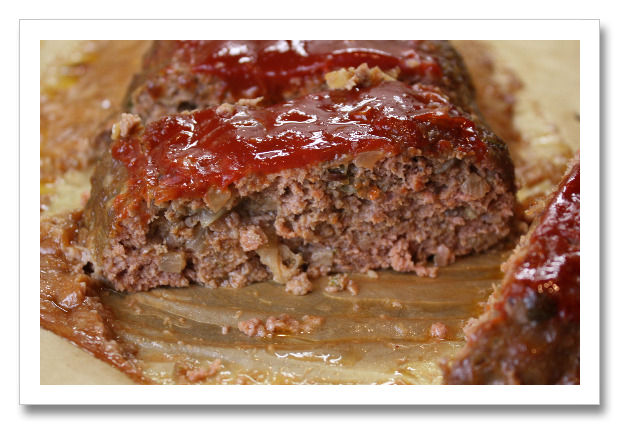
What’s the big deal about meat loaf? There must be thousands of recipes for it. Forgiving is the best word to describe making one – you can put in so many different things from onions (common), eggs, carrots, bell peppers, garlic, bread crumbs, or oatmeal. And herbs. There’s one recipe on my blog for an Chinese Meatloaf with tons of chopped cabbage in it. And an Asian glaze on top.

We entertained a group of friends for an early (1:00 pm) dinner on a recent Sunday. I had to hustle to get a full-on dinner ready by 1:00, because I didn’t start until about 10:30 when we got home from church. I’d done what I could the night before, and fortunately my DH helped me a lot. This recipe has been in my to-try file for years. It was originally published in the Los Angeles Times food section in a column called “Culinary SOS,” in which readers request a recipe from a restaurant somewhere in the L.A. area, or they ask for a long ago recipe that appeared in the newspaper.
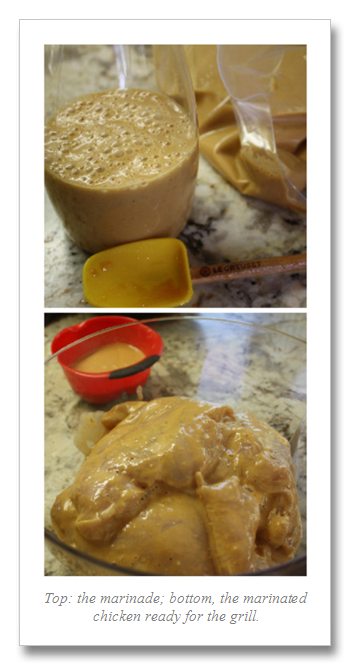
Someone had written in asking for this specific recipe served at a cafe in Pasadena called Happy Trails Catering & Cafe. The marinade is what makes the dish, no question. And there’s nothing in it that’s unusual, but I’d guess the secret to the recipe is the 1/2 cup of defrosted orange juice concentrate. That’s what gives it the zingy taste. I served it with the Grilled Panzanella Salad from a few weeks ago (this was the third time I’ve made it), the watermelon feta mint salad that I serve all through the summer. And I made a peach crisp with maple cream sauce , which I wrote up a day or so ago.
The recipe didn’t indicate to do so, but I whizzed the marinade in the blender, which made it an homogenized mixture, which didn’t separate, even days later. About a third of it you remove to serve drizzled over the top, and the 2/3 you use for marinating and basting. The original salad at the cafe was served with greens, pea pods and diced red bell peppers. I served it as an entree, on a bed of dressed greens.
The chicken was wonderful. Definitely I’d make it again. Loved the marinade or sauce – loved that I had a little drizzle of it to put on top – just in case the chicken was dry (it wasn’t). My DH grilled it over a slower grill setting than usual (at my suggestion because I thought the chicken might burn with the sugar from the OJ concentrate) if cooked too high. He did it perfectly – it was tender and moist, and oh-so flavorful from the marinade. Once cooked I sliced the chicken in wide pieces and laid them on the dressed greens. And instead of including the sesame seeds in the marinade I sprinkled them on top just before serving.
Recipe By: From Happy Trails Catering & Cafe in Pasadena, CA, published in the L.A. Times
Serving Size: 8
NOTES: Since the marinade contains orange juice (which contains natural sugars), grill the chicken on the low side of medium-high so it won’t burn. Even medium is fine – it will just take a bit longer. Don’t overcook it, though. If serving this as a stand-alone meal, place the chicken on a bed of baby greens, diced red bell pepper and pea pods drizzled with more of the marinade/dressing.
1/2 cup orange juice, frozen concentrate — defrosted
1 1/2 cups vegetable oil
1/4 cup toasted sesame oil
1/2 cup rice vinegar
1 tablespoon minced garlic
2 tablespoons grated ginger root
2 tablespoons soy sauce
2 tablespoons chili sauce
Salt and pepper to taste
6 boneless skinless chicken breast halves — if small, you may need 8 breasts
2 tablespoons toasted sesame seeds
1. Combine orange juice concentrate, vegetable and sesame oils, vinegar, garlic, ginger, soy sauce, chili sauce and salt and pepper to taste in bowl (or whiz it up in a blender to homogenize it). Remove 1/3 of the marinade and pour into a jar and refrigerate.
2. Pour the remaining marinade in a zip-sealing plastic bag, add chicken, cover and marinate in refrigerator 1 to 2 hours, turning it over once or twice.
3. Grill chicken on grill pan set over medium to medium-high heat or on outdoor grill, basting pieces with sauce and turning frequently, until chicken is fully cooked and richly glazed on both sides, about 5 minutes per side. Remove chicken, allow to rest a minute or two, then slice each breast in about 3-4 pieces. Place chicken on a bed of greens, sprinkle with sesame seeds and drizzle with the reserved marinade and serve.
Per Serving (assumes you eat all the marinade and sauce): 566 Calories; 50g Fat (78.4% calories from fat); 22g Protein; 9g Carbohydrate; 1g Dietary Fiber; 51mg Cholesterol; 317mg Sodium.
A year ago: Orzo Risotto
Two years ago: Danish Ground Round Steaks with Onions
Three years ago: Siciliana Sauce
Leave a Comment!